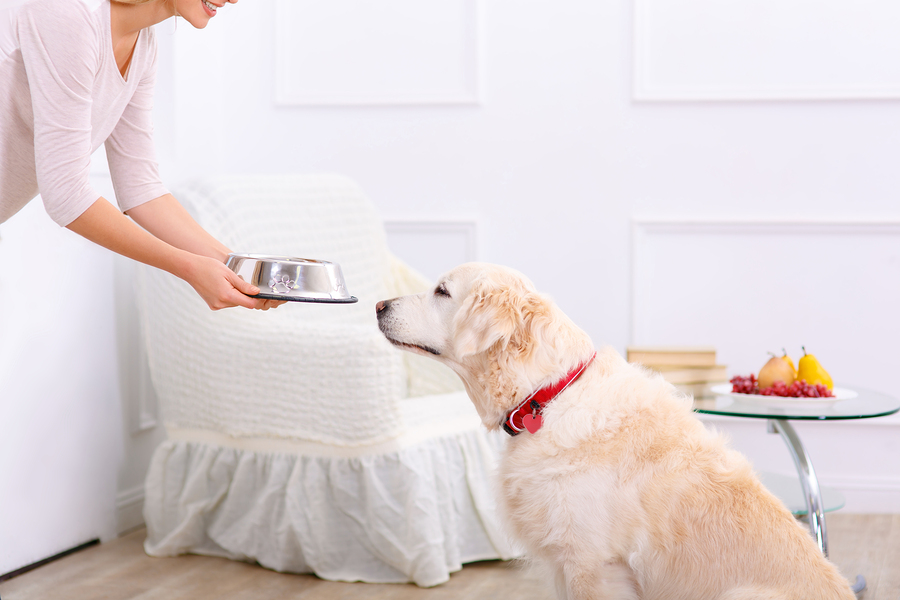
This post may contain affiliate links. We are compensated for referring customers to our affiliate partners.
Dogs love to follow a routine, especially when it comes to feeding time. With a routine your dog will feel safe, secure, and happy. Also a scheduled routine helps your dog’s body optimize the nutrition in their dog food, making for an active and healthy pup. Science has not yet told us whether dogs themselves can tell time, but we do know that they can learn from their humans really fast, especially when it comes to what to do and when. So when it comes to dog nutrition, it is extremely important for dog owners to evaluate their own itineraries, and figure out the best times to fit in a consistent, routine schedule for their dogs.
Just as their personalities differ drastically, every dog has slightly different food needs. Maintaining a routine is key regardless. The following information will provide a general outline for beginning and preserving a comfortable and optimal schedule for dogs of different ages, situations, and needs.
Ideal Feeding Schedule For Puppies
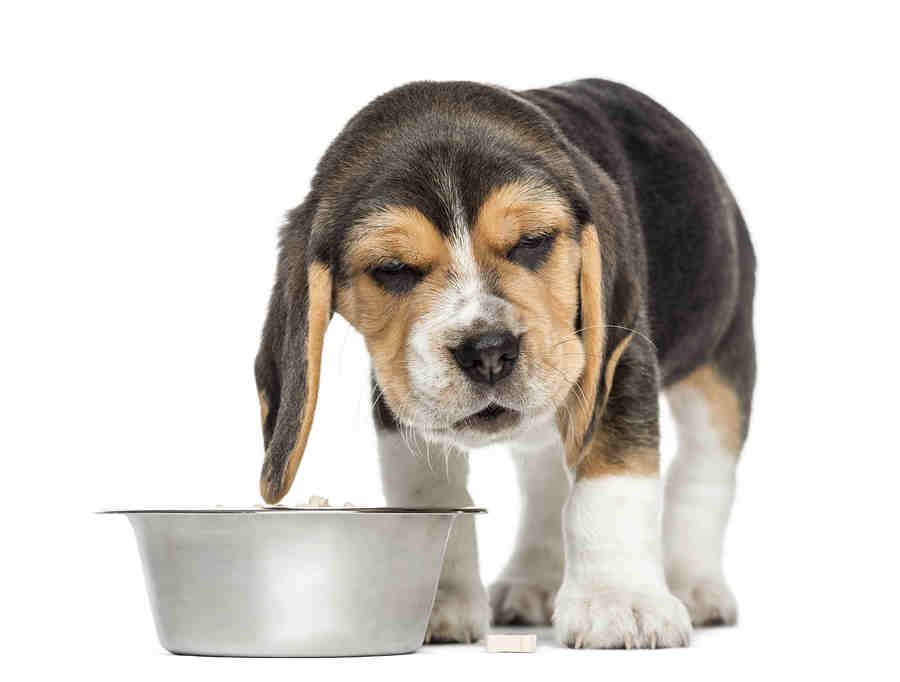
If you are lucky enough to raise a puppy from birth, you can begin teaching your puppy its optimal schedule after it’s weaning period of about 6 weeks. After you transition the puppy from formula to puppy food, you can begin a routine puppy feeding schedule. Be sure to research the best puppy food brands before you begin that process. Since puppies require 3 meals per day, it may be necessary to hire a sitter if you won’t be available. The ideal schedule for puppies is:
- 7am: Breakfast
- 12 Noon: Midday Meal
- 5pm: Dinner (note that this is earlier than it generally would be for adult dogs.)
After 14-16 weeks of the above puppy feeding schedule, you can begin feeding them two times a day instead of three, in order to prepare them for the adult dog feeding schedule.
The Ideal Schedule For Adult Dogs
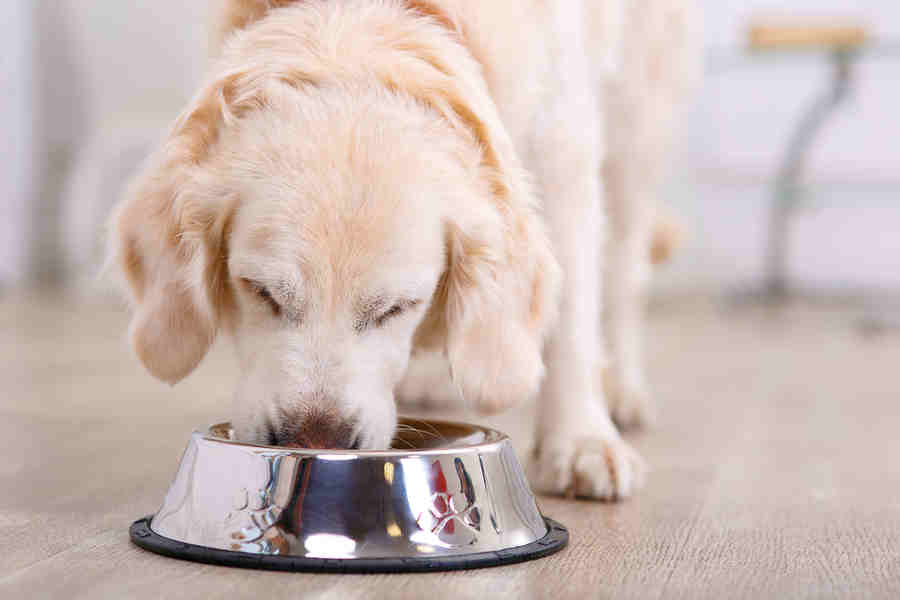
Once your puppy is all grown up, it’s important that you readjust your dog to a new diet and schedule. It is highly recommended that you feed your adult dog the healthiest dog food available, only twice per day. This will provide the foundation for your dog’s daily itinerary, and allow for a comfortable and ideal routine that suits most dogs and their owners:
- 7am (before work): Breakfast
- 6pm (after work): Dinner
It’s as easy as that! We know what it’s like to have to get up early for the first time to get to a new job– painful at first, but natural after a period of time. In the same way, dogs might not immediately like their new routine, but will learn to eat exclusively on time after a period of adjustment.
How To Introduce Your New Dog To Their Feeding Schedule
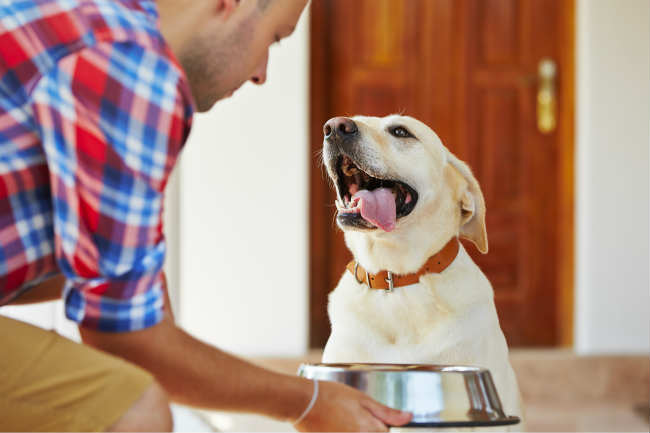
So you have a new dog! Adopting a dog is exciting and wonderful, but potentially overwhelming and confusing as well. Fear not, this can serve as a guide to getting your new buddy prepared for a new home and schedule.
The first step to creating a new eating schedule for your dog is asking the previous owner what the dog was accustomed to eating and when. The first few days after your new dog arrives at your home, it’s in everyone’s best interest if you imitate that diet and schedule to the best of your ability. Otherwise, your new dog might experience some tummy trouble. Over the following couple weeks, you can transition him/her into eating a different brand of food by starting with a small ratio of new food to old food. Then, gradually increase it until they are comfortable with your preferred brand. Once that process is complete, it’s safe to reset their clock to a consistent morning and evening schedule.
The easiest way to let a new dog know that you are serious about maintaining a routine takes some tough love. On the first morning of the new schedule, get your dog’s attention and leave the dog’s bowl with food on the floor for 10 minutes beginning at 7am. If your dog has a known tendency to eat slowly, you can extend that time to 15 or 20 minutes, so long as they are eating the entire time. If he/she refuses to eat, eats abnormally slowly, or gets distracted, you must remove the bowl and discard the remaining food once the time limit is up.
By the 6pm mealtime, your dog will likely be ready to eat as soon as you put the bowl down. That being said, dinner must follow the same rules, and you should only leave the bowl down for ten minutes. Repeat that process as necessary, and your dog will quickly adjust to the new schedule, providing countless long-term benefits.
Ideal Feeding Schedule For Senior Dogs
As your dog ages, their activity decreases, so decreasing the amount of food they eat daily is absolutely necessary. However, they should be able to maintain the same feeding schedule that younger adult dogs are used to. If your senior dog is unwilling to eat on a routine schedule, or seems to be struggling with it, then some veterinary attention might be the best call to determine what to feed your dog and when.
Ideal Schedule For Feeding Your Dog – More or Less Active Breeds
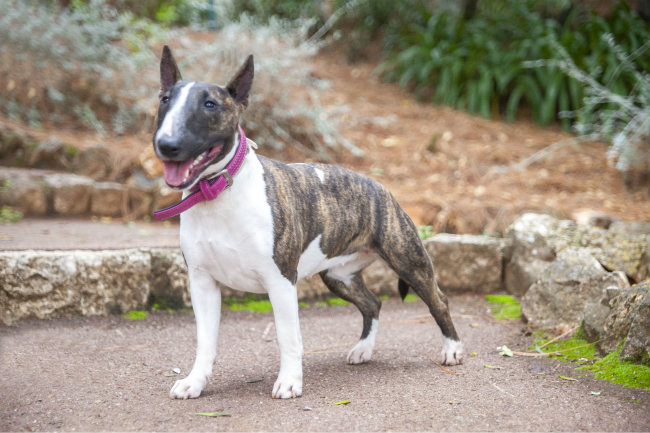
More active breeds, such as any Terrier, may require a different feeding schedule from your average adult dog. Highly active dogs with high metabolisms need to eat 3 times per day, as they burn more calories and sleep less. Following the same schedule as your ordinary dog, but adding in a noontime meal is the safest bet. Less active dog breeds, and ones that spend a lot of time sleeping, may only require one meal per day, which can be scheduled based on the dog’s preference.
